
I’m hoping you can tell me a story. In my mind, the story begins with the group of you meeting at Kaospilots, starting Heima, building the house, inviting the first residents, and having the vision of the house change through these processes while also negotiating the financial aspects of a loan, the repayments, and the for-profit artist residency business model. This has created a foundation for engaging with the local economy of Seyðisfjörður with strong ties maintained with Denmark and a global cast of artistic characters. This created the impetus for the LungA School. I understand these are two different entities — the school and the residency — but they are also very entangled culturally, financially, and with the local inhabitants of Seyðisfjörður. There’s been lots of cultural and social exchange, the revitalization of the cultural house, and through an opportunity to build a house for yourself and the negotiations that occurred there. I understand that this might be a little bit weird to talk about, because I don’t want you to reveal any sensitive information.
It’s not sensitive at all. I love talking about money.

That’s good! Lastly, to provide a little context, I’m very interested in thinking with you about how you have orchestrated these structures while being keenly aware of the local needs. You are such an astute thinker in understanding the global embeddedness of supply chains and political coordination efforts required to get resources to this very isolated outpost in the Eastern Fjords of Iceland. Learning how you created structures that are nested within these larger capitalist structures might be very interesting to explore with you. What do you think about that as a setup?
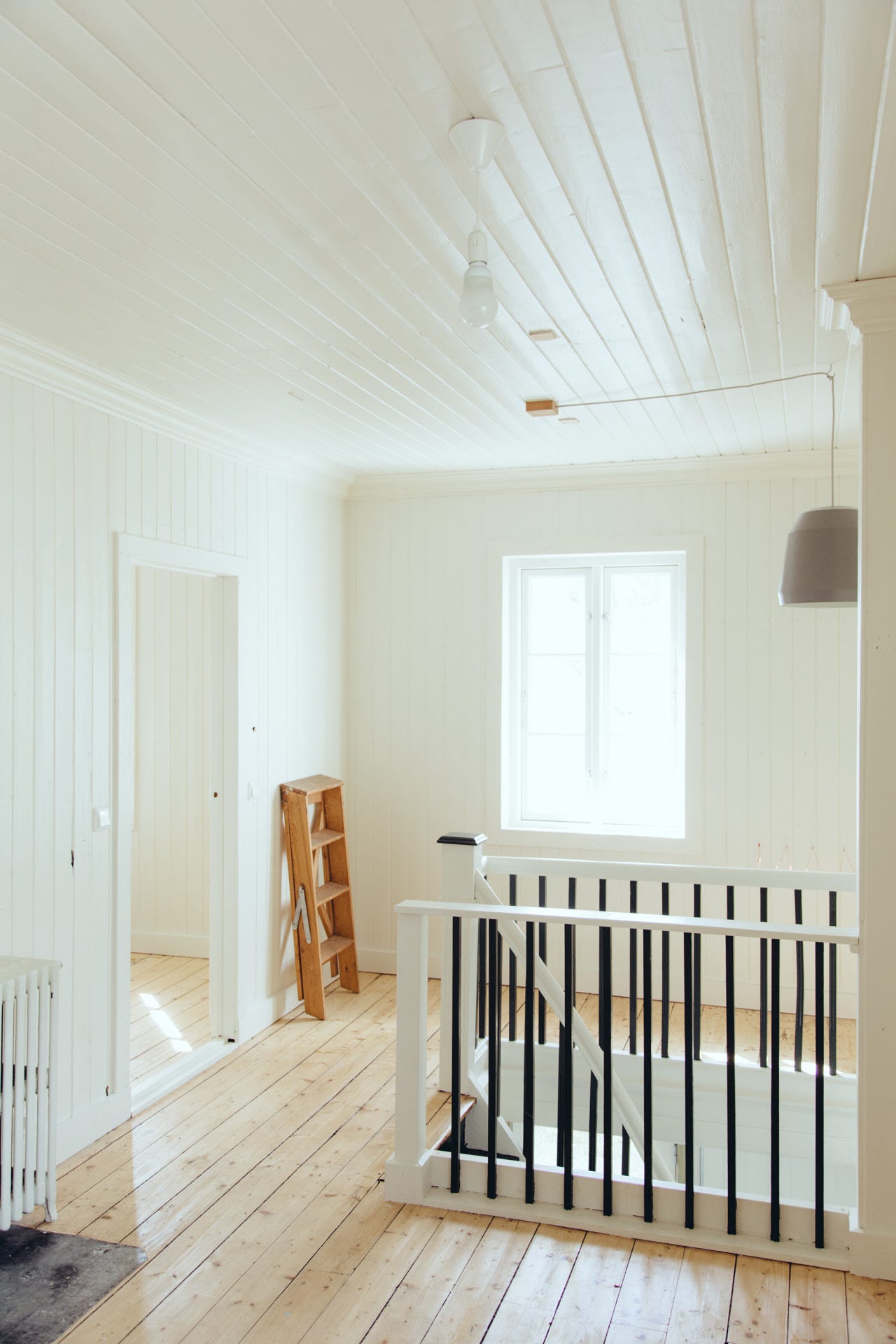
That sounds great. I think it’s really worthwhile and I also think it’s extremely interesting to talk about, because I think the financial aspects of anything seem to inhibit a lot of really good projects from becoming more than conversations. Where should we start? Heima was purchased in 2011. At that point we were four people; it was Bjort, Andreas, Lasse and me buying the house together. None of us had any money at all and we managed to convince our bank lady. We actually all still have her as our banker even though she has moved jobs two or three times since. We follow her because she has been very helpful and I would say instrumental in all of this happening.

We bought Heima for what is, I guess, the equivalent of around $35,000 USD and we managed to borrow around $15,000 each. We had to buy the house and we had a little bit leftover to sustain it and us for a while afterwards. We didn’t really have a plan for what the house should become. We had no idea of how big the renovation project was going to be and the cost of it. We had no clear intention with the house. Basically, our intention was a place that we could go to. That was at least our drive. It was a playground for us. It was a big house and we were four people and it was at a point where we could see it needed a lot of renovation and a lot of care, but at the same time if you’re up for living in a pretty scrappy mode it was ready for you. We could start living there right away and so it fit perfectly. We also knew that we had to put our hands into it over the years. We had a lot of conversations about what the idea was with a house like this and the purpose of the space, but many of our ideas were also based on the necessity of needing to find some money somehow, so we were formulating various ideas to help us fundraise. Ultimately, we managed to fundraise almost nothing.

You mean the fundraising was a failure?
Completely. We did a crowdfunding campaign, but we hated crowdfunding campaigns, even then. We decided to not hold back on the artistic aspirations and accounted for those materials in the crowdfunding budget. I think that narrowed down the potential benefactors significantly, so we ended up not getting anything. Instead, we went another direction that has been very helpful.

It was really incredible what happened with the organization of Heima and the experience has stayed with us in many of our other projects. We started putting out invitations for people to visit us instead of trying to raise a lot of money. We made an invitation for two people that said if you are up for helping us with this for a couple of months, then we’ll pay for your trip and your food and we’ll try and be good hosts for your stay here. The intention was to just have two people helping us for a couple of months with Heima, but we ended up having a lot of people responding, so we decided to invite five or six people and we spent some of our money to bring them to Seyðisfjörður. We had a huge crew building Heima for the first 1.5–2 months, which means that it went very quickly. I think we renovated 90% of the house in 3.5–4 months. It was pretty bizarre how quickly that went with such a big house.

We talked to our Icelandic bank guy, because we knew we couldn’t fundraise anything so we had to get the money from somewhere. Then we thought fuck it, we’ll do the bank thing. We started an organization that took over the ownership of the house, which also meant that the organization took on the loan, so we weren’t personally involved with the loans. With both Heima and the school it has become almost a principle to not become personally financially liable in a way, always having these entities that take on the responsibility.
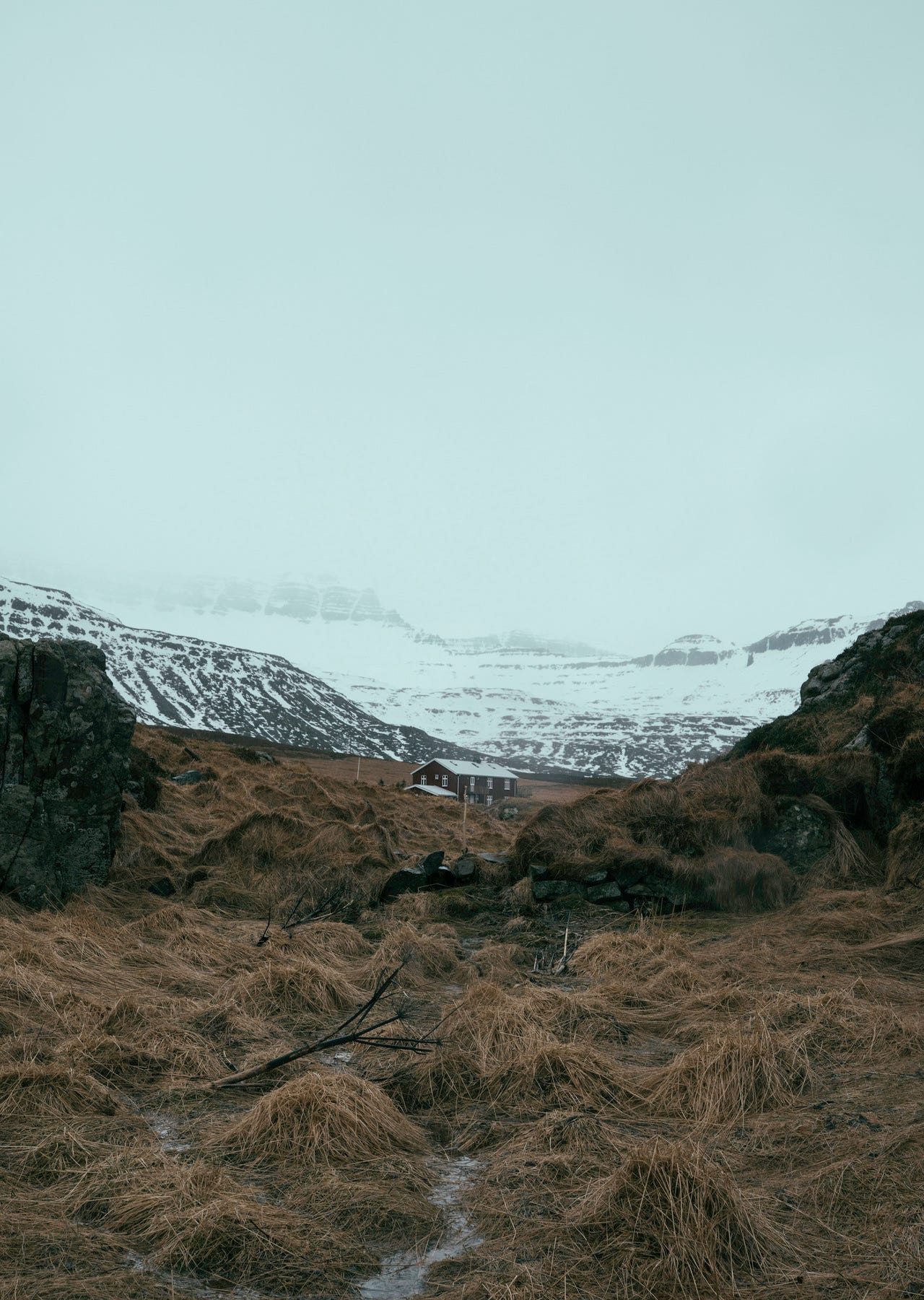
Does that mean that you did not own the house?
Yes, it meant that we did not directly own the house, but we were the ones that were the board of the organization that owned the house. There’s never been an intention or a dream of owning a lot of things from any of us. That was a step towards our understanding of managing a shared treasury: that we don’t need to own anything, that our personal financial activity should be kept as low as possible, both incoming and outgoing, and to move all the activity to the collective entity. I really liked that because that meant there was always a conversation about how money is spent. I think that’s a very healthy conversation. Those conversations have been built into all the projects in a funny way. We borrowed money by making — more or less — made up business plans not really rooted in any thing we could argue for, but rooted in our ability to argue with them anyway.

We had these bizarre meetings where we drove to the bank with a business plan and said: We can see in this business plan that compared to the last business plan we actually are going to make a little bit more money than we thought, so we were wondering if we could borrow a little bit more money, because we’re running out and we need to renovate some more. And then the bank would say: Ah, we can see this business plan looks better, but it’s still not good enough, so I’m sorry I can’t lend you more money. And then we’re like: Okay, we’ll be back in half an hour. We went to the car, adjusted the numbers, and went back into the bank. Okay, we’ve readjusted the concept a little bit and we think with this new concept we can maybe make a little bit more money. And they looked at it and said, Ah, this looks much better. Then we could borrow a little bit more money! It was so stupid. At that point, I lost all respect for money. Shit, it’s just so bizarre. I thought it was funny and I was very happy that we could borrow some more money, but I was aware that it was not okay. This is how people get trapped. Why is it so easy?

It’s a tricky trap and you can fall into it or you can set it for others. It’s a game; you can play to win the game, which might actually make you a loser by default, or you can play against the rules of the game, to manipulate the rules of the game and break the game, and maybe that’s the only way to truly win.
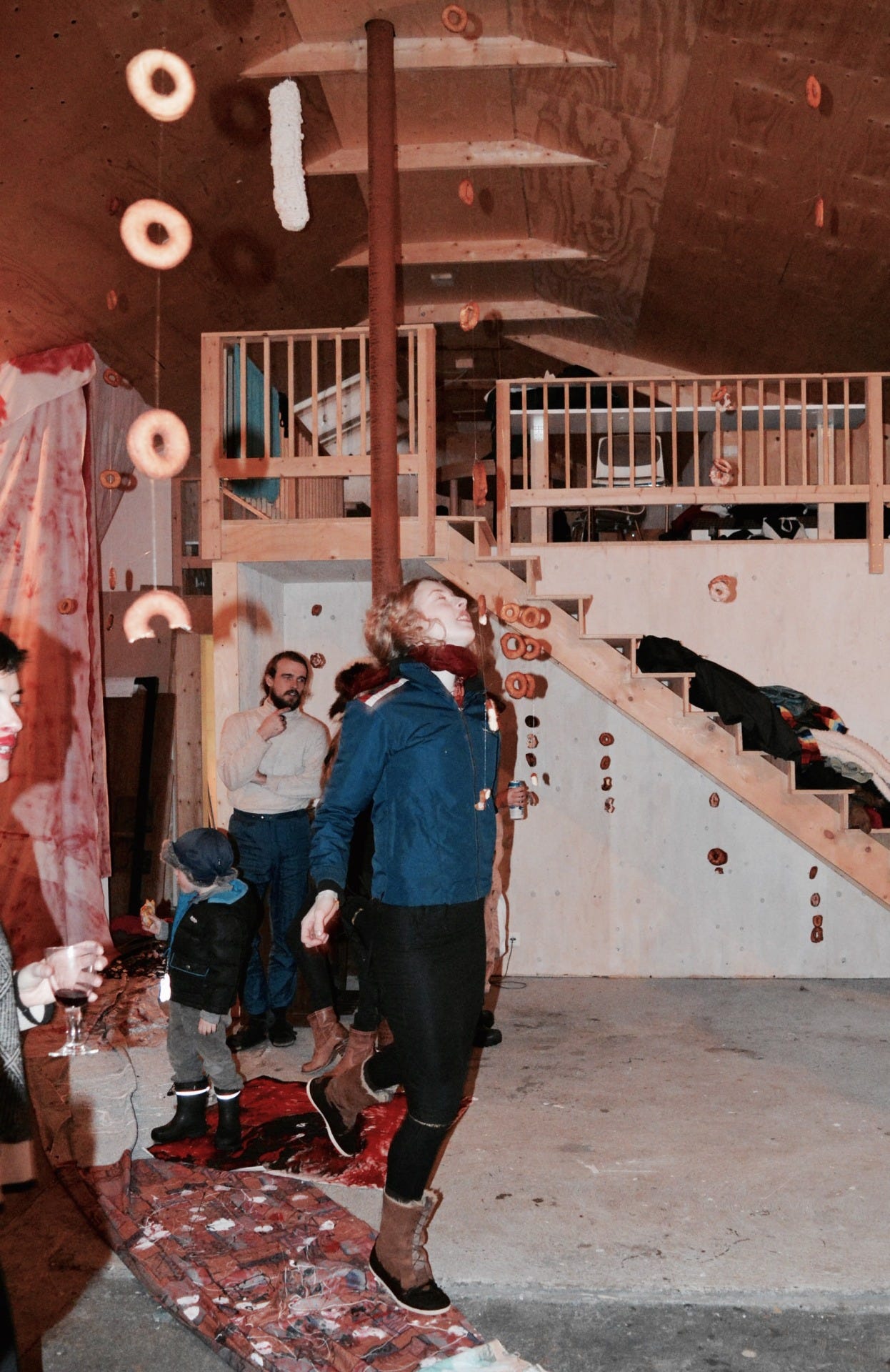
We were completely aware that we were part of constructing our own trap, going into it willingly. Especially in Iceland, compared to Denmark at least, the interest rates are insane; you pay so much interest. We knew it was going to be a shadow hanging over our heads for many years and it still is. It’s still there; the debt. It has become significantly smaller, but it’s still there. With Heima, we always tried to do the most interesting structure within the necessities of the situation. We needed to raise X amount of money annually to make it work and at the same time the whole intention was to be able to make a space for inviting people to Seyðisfjörður for longer durations. Our model back then, of making this very loose collective where people could just come and go for a year, I think is still one of the most fun models for a residency that I’ve been a part of.
And also that I’ve been a part of.

In a way, it was also the easiest to administrate, because people had to administer themselves. Of course, we were the contacts, but once everyone was there, they had to work it out. The idea came out of necessity, out of the constraints of the situation. What happened with Heima was that I moved to Seyðisfjörður, then Lasse also moved there and that meant that Heima, the institution, covered our rents. We dedicated ourselves to taking care of the house with this big mess of new people constantly coming and going. That role helped us with something very essential, namely, a place to live. The school has continued to support us, because for many years it was very rare that there was any salary involved. The school helped us with another very essential thing, which was food. We suddenly had a situation where these things we were doing helped us with a place to stay, with travel costs, with food, and material costs for our projects. I remember thinking that I really couldn’t come up with what else I needed money for in my life. For years, I spent almost no money, which felt and feels so good. I didn’t really need a salary. When we got it, it was great. When we didn’t, it was fine. Over the years I’ve been able to save up a little bit, because we were taken care of by these projects. Looking at it strictly financially, it was a horrible deal for us, but in all other aspects it was a really nice situation. It was extraordinarily liberating.

There is such a profound freedom gained by disengaging from the conventional cycle of being indebted to an employer.

Exactly. It also liberated us within the project. If this is the premise, then I’m gonna do what ever the fuck I want, because if I can’t do whatever the fuck I want, I’m out of here. It really allowed us to focus and question what we were doing all the time, because it had to be worthwhile for us. It also helped me in the sense that it became very clear that in my life in general I was going to try to minimize my personal costs as much as possible. I tried to be as debt free as possible, because not having expenses is essential for me to feel free. Then there was this very nice deal that Ollie suggested for us…
It’s worth briefly contextualizing the situation with Ollie. He’s a cornerstone of the community, an entrepreneur that has opened his home to travelers, a geographer, and the proprietor of the Skálanes nature and heritage center that serves as an important destination for many different kinds of scientific and artistic researchers and also provides a magical component of the LungA School curriculum. You negotiated to build a house on his property in exchange for seven years of rent-free living, as a kind of sweat equity. You applied your human energy and your building experience, he provided a budget for materials, and you worked together to coordinate the allocation of the materials from Denmark and the design of the house. The execution of the project resulted in an incredibly beautiful and unique house that will ultimately come to benefit everyone involved. The nature of that project stands as a monument of successful coordination in that community. At least that’s how I perceive it.

That’s also how I remember it. It was such a fun two months building the house. The whole thing just went at a crazy tempo. It was incredible. It was like a little miracle and no one had seen anything like it. There was a lot of energy in the town around that project.
There are two significant anecdotes that I might reminisce with you. First, the foundation needed to be replaced and the entire skeletal frame needed to be literally elevated off of the ground with jacks. Everyone was in total disbelief that this was even possible and then all of a sudden the house was lifting and it was levitating off of the ground. It was at that moment that I realized that this is a place where impossible things can happen. You just do the impossible; you don’t have to believe that it’s possible, you can just do it and then it is possible after the fact. Second, I remember there was so much discussion about cement. There was a cement floor being poured in the artist workshop of Heima and a lot of talk about the different consistencies. First there would be a rough pour, a foundational layer that had coarse grit, and then on top there would be a smooth, silky, yogurt-textured surface. There was so much strategy and coordination that went into thinking about how the layers would be poured.

I’ll also never forget the pouring of the foundation wall around Ollie’s house and the interesting communication barrier with the two brothers. It’s not that they didn’t speak English; they simply didn’t speak. Yet they had the expertise. If you needed cement poured in Seyðisfjörður they were the ones that could help you. From my perspective, the cement foundation wall was constructed almost telepathically. These flimsy plywood retainers were set into place and the cement began to flow from the mixing truck and again it seemed like this impossible thing was taking place before my eyes. It was a moment of horror, then there were the sounds of the wood cracking under the weight, and for a minute there was a question if it was properly reinforced and if it would all explode and if the entire house would collapse. It was a moment where something impossible became possible and has been holding itself together ever since.

Maybe you could tell me a bit about the transition from the economic situation with Heima to the economic situation of the LungA School and how that has evolved to where it is now.
After we had the idea of a school-like situation that we would like to invite people into, we started asking how do we do it? We did some calculation on the minimum financial needs to erect a first version and we figured out that it wasn’t a lot. We talked to some people in town, because there were a lot of people interested in supporting this idea. We made a good deal on renting the hostel for the students and the hotel was willing to make a good deal on the food. In the beginning, we didn’t pay anything to be in Herðubreið (the Seyðisfjörður cultural house) so the town could support us with a no-rent situation for the office and an awkward studio space we had in the dining hall.

There were some moveable walls that partitioned a gymnasium and on one side there were tables set up. The children of the town would eat lunch and then the fish factory workers came in to eat after, right?
It was a wall on wheels, with the dining hall on one side and then behind that wall we had our studio space for the school. It was a very chaotic situation.
A lot of entanglement with the people of the town and also such a profound generosity in the sharing of these common resources.
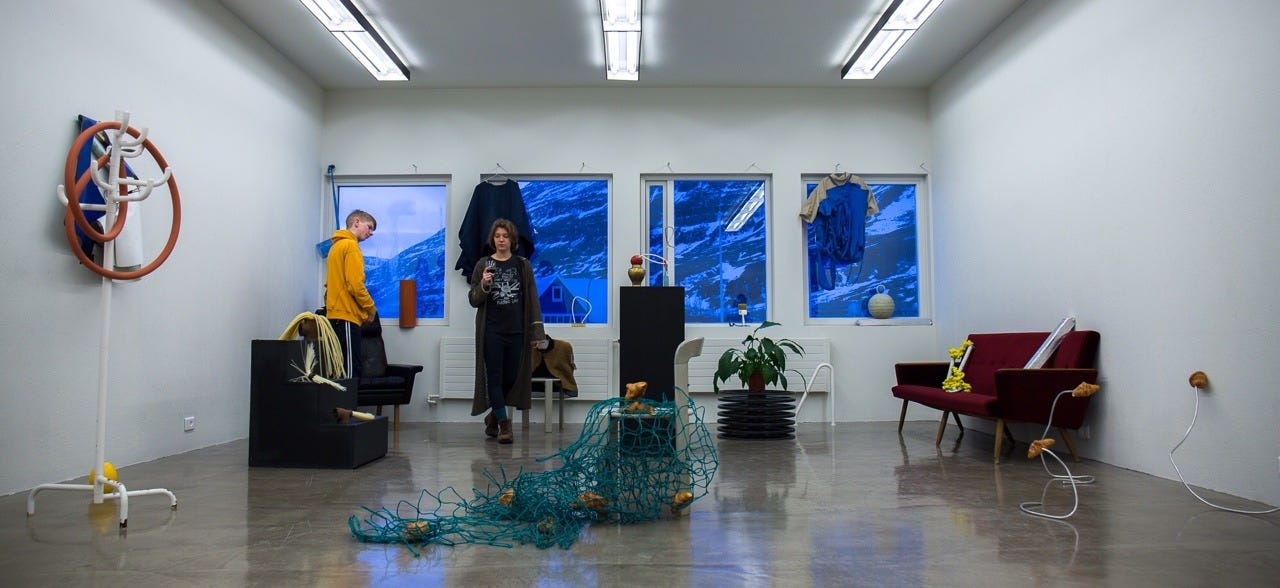
Yeah, it was amazing. During every cohort I remember being really amazed at how the group of participants were okay with this setup, because it was pretty scrappy. There has been incredible support from the students. Back then our budget was incredibly small. We managed to raise a little bit of money from the Scandinavian Educational Fund, we got some money from the European Educational Fund, and — like with Heima — we came up with ideas and business plans to spend this money that was meant to be spent developing a project that was already developed. Combined with the student tuition, we had enough to finance the operations of the school at a bare minimum. We could pay the guest artists, cover food and accommodations, and all that stuff. Sometimes there was a salary, but not often in the first two or three years.

In order to become more financially stable we knew we would have to become part of a legal framework that would allow the government to support us on a more regular basis, but the legal framework didn’t really exist yet. There were a lot of educational-legal frameworks and we were advised to try and adjust the program to fit their requirements in order to be eligible for financial support, but we weren’t so interested in that. From the beginning we tried to lobby for the development of a new legal framework that would be more aligned with the free school movement that has existed in Scandinavia for almost 200 years. In 2019, a new bill was passed in Parliament that allowed for the recognition of a kind of school that could be an independent, mostly autonomous educational institution that is allowed to develop its own curriculum and create its own structures; there’s very little formal requirements. This bill is leaning on a long history of an expanded educational format in the Nordic countries. That allowed us to see that we could have a more stable financial situation and allowed us to return to an idea that we talked a lot about before starting the school: we would craft a small, loosely coupled organization without a fixed center of particular people.
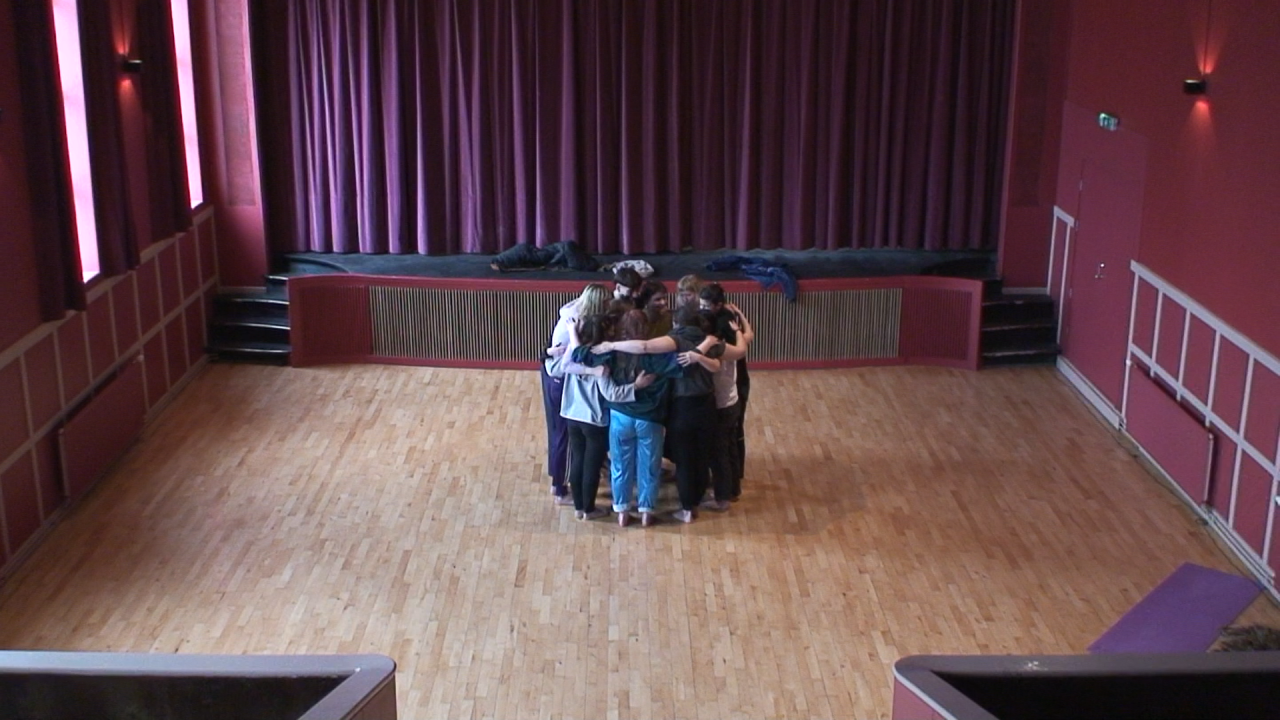
We were interested in making a very loose organization that could support the school in various ways at different times that was also able to be involved with other projects in other places. This became the structure that we’ve been trying out for the last year and a half. We went from being two people who were doing all the administration, curation, facilitation, and all the other stuff all the time in all the programs to now being six people who have different roles. One person is an Administrative Director, we have a Facility Manager, and we have four people who are Program Directors responsible for curating and facilitating the school programs. We take turns in doing that, so two people take the fall program and two people take the spring program. That allows us to have about 8.5 months where we are not tied up to the school or in Seyðisfjörður so we can be in other places and do other things with other people.
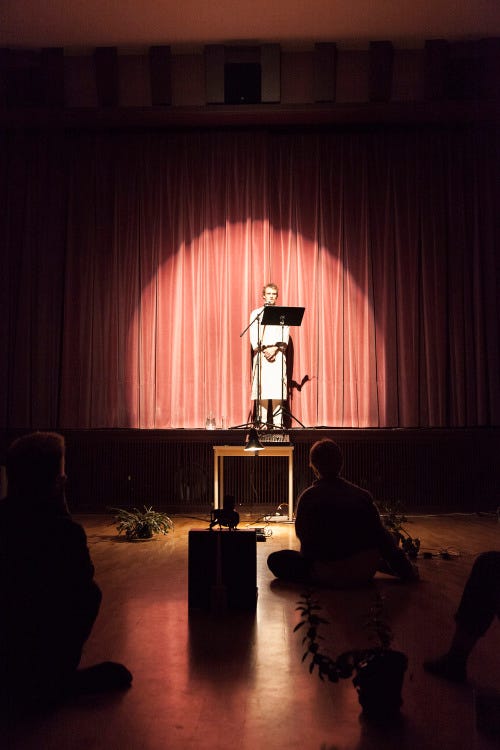
Financially speaking, we are six people splitting 2.4 full time positions. The Administrative Director is hired on for 2/3 full-time, the Facility Manager is hired on for 1/3, and the fall Program Directors are 1/3 each. Instead of having full-time pay four months per year, I’ve split it up so that I have a smaller salary, but I have it every month of the year. We’ve been inspired by the concept of universal basic income. It didn’t seem to be in place anywhere in the world, so we tried to create a situation for ourselves that would be similar to that. I personally feel that I’m involved with universal basic income, because I have this little bit of money coming in every month. It’s enough to sustain me. It’s not enough if I want to buy a fancy car, but it’s definitely enough to sustain me.

Here in in the US, this basic income is often described as the ticket of entry to participate within the grotesque consumerism of the middle class. We must reconsider our basic needs; your food, your house, and the resources to execute projects and continue being a proactive contributor to the community. What more do you need really in addition to that? That additional income is no longer basic; it becomes excessive accumulation.

You said your income sustains you and I think sustainability is absolutely an essential topic for us to meditate upon as individuals and as a collective, as a civilization. This is a loaded term that brings up associations of sustainable ecology, but perhaps there is another sense or sensibility of sustainability at play here. Perhaps we might apply sustainability to the culture we are crafting, something closer to reciprocity. In our first conversation you stated that you wanted to design the school as a space where everybody showed up and immediately began to feel some kind of ownership so no single person would own it, to make it our school so all of the students would feel engaged in the collective responsibility of making the space together and forming the program together. Through the distribution of identity and responsibility, another kind of model of sustainability might be said to arise.
In relation to the local environment, it would be absurd and also rather disgusting to imagine a feigned sustainability that does not take into consideration the immediate needs of the local people, like some European enterprise that goes to the “third” world to create an eco village where all of the local inhabitants are subservient to the desires of eco-tourists. The projects that you have designed intertwine with perspectives of local contributors and are sensitive to local needs. There is a beautiful synergy taking place with your contributions as outsiders in recognizing and being respectful to the needs of the locals. Maybe you can tell me a little bit more about that in your own words?

This notion of reciprocity is the word that was spoken the most in our last program. We read Braiding Sweetgrass by Robin Wall Kimmerer and she has this passage where she talks about an ethics of reciprocity, coming from an ecological and biological conversation that she mentions quite a few times with the garden and with the other species and plants around us. In terms of our relationship to community, even before having the words it was definitely the way that we felt. If there isn’t a reciprocal relationship with the community, I can’t see why we should be there. It’s tricky to talk about what it actually consists of, because it’s not just giving and taking, it’s not like bartering, but it’s about being involved in each other’s existences in a way where you’re contributing to each other’s lives in subtle and explicit ways, in all sorts of different ways. As a guiding term, I find it incredibly helpful, because it’s rooted in cultivating living relationships. It’s not just about giving and it’s not just about receiving and it’s not just about noticing needs and it’s not just about care for yourself or just caring for the community; it’s all these things, and it has this element of nurturing a living relationship.

You can have many exchanges that don’t constitute a living relationship, rather they might become a non-relationship. Reciprocity has everything to do with living relationships. It’s just an incredibly helpful word. It’s also the relationship that I have with the school and with Heima. I have a very living relationship with the school where I can feel that I’m relating to it as an entity, like an individual, like doing something for a friend without them knowing it. They won’t even know I did this, but I did it. I also know that the school constantly does that for me, without me noticing. It deposits money in my bank account every month and it also covers my travels to Iceland and while I’m there it serves me food and all these little things. If you consider this as a job you might take it for granted, but if you consider this a living relationship with an entity there’s a lot of reciprocity going on.
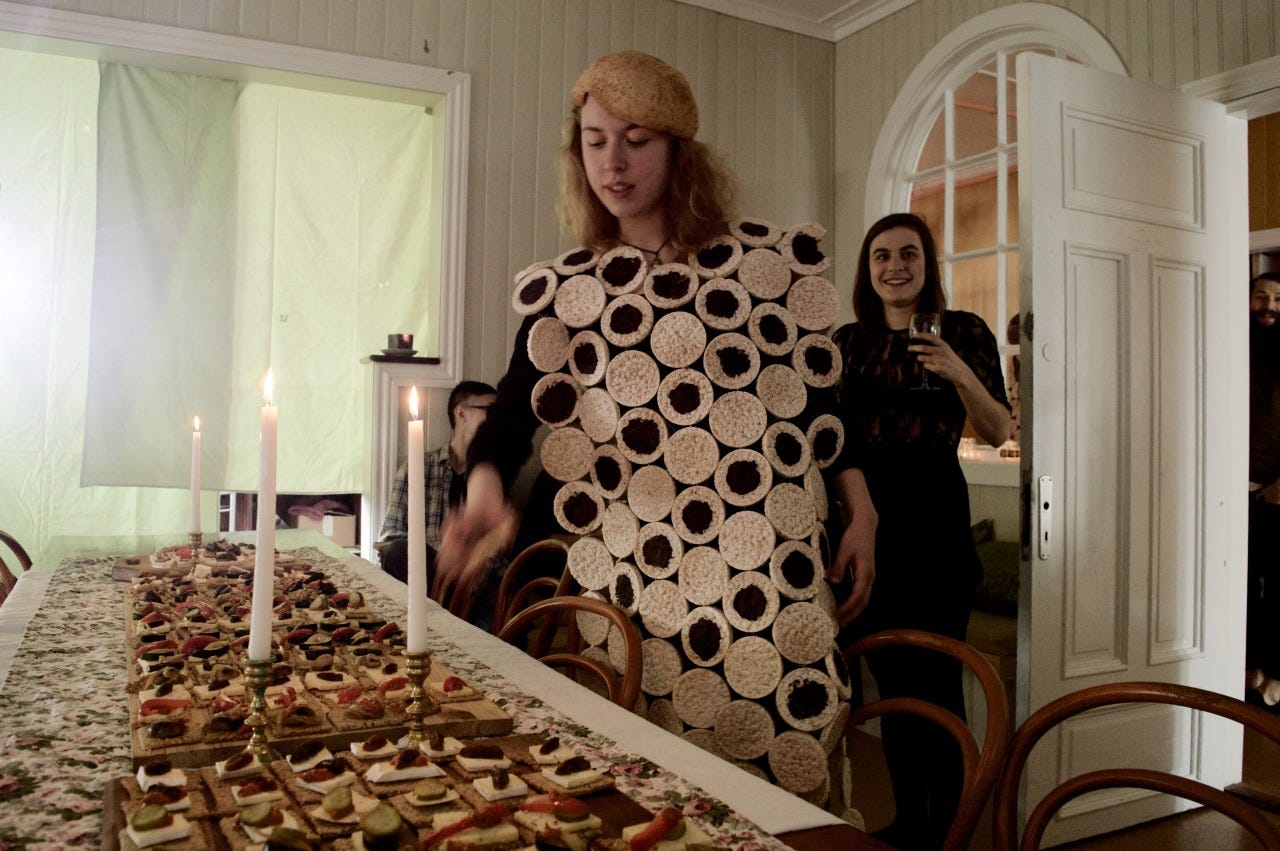
The gift that is given in secret or through anonymity, without it being visible and explicit; this is the most powerful kind of gift. George Bataille thought about the gift economy of symbolic exchange in relation to the writings of Marcel Mauss. When a gift is given in the open, it is symbolically a signal of the creation of a debt. The gift is given because you expect it to come back to you. This is not true reciprocity. It’s an amelioration of a debt that was created with the prior giving. Bataille juxtaposes this with the concept of potlatch. If there are two competing entities or rivalrous tribes that are at war with each other, the passing of a gift would exacerbate the tension — throw fuel on the fire — because it would increase the disequilibrium between the groups, increasing the inequality. The more elegant solution, the more mature solution — politically and spiritually — is for one leader to recognize that it is within their power to bring the world back into balance by sacrificing something of themselves, something from their own lot, and to do this very publicly so that the leader of the opposing tribe would see that they are willing to make this sacrifice and be ashamed to lose face before their own people for lack of generosity. The only way this sacrificial act might be reciprocated is by an equal or greater sacrifice of themselves. This is an erasure of debt, because it is immediately apparent that if we continue to sacrifice ourselves very soon no one will have anything left, so there’s no need to actually perform these acts. We can strategize sacrifice symbolically to restore balance.

There’s so much more we might discuss around this, such as the potential to design programs that escape the rigmarole of rivalrous competition. For example, there is another artist residency in Seyðisfjörður that you successfully formed a collaborative culture with, even though they are both autonomous business models that could be seen as being competitive with each other, or even the fact that you organized an artist residency program, since artists could be seen as being competitive with each other. However, I felt a profound culture of reciprocity when I was an artist-in-residence. I’ve made more friends in the ten weeks that I attended Heima, that summer, than I had made in the 2.5 years that I was living in Sweden. Stockholm is such a competitive culture, built upon the fashion industry, that creates an atmosphere of high-velocity collusion and infinite novelty. When I first became a resident at Heima it was so refreshing how all of that seemed to be wiped away. The way that we shared food, the way that we shared the kitchen, the way that we shared living space, the way that we coordinated our time in the bathroom; the most mundane and domestic things, but also the way that conversations were conducted with sensitivity and the kind of support that was extended for each other’s projects. When competition is killed and the gifting impulse transforms into reciprocal exchange rather than the perpetuation of debt and people stop thinking so much about how much something costs in order to craft an open space of reciprocal exchange, we’re able to emphasize the vision over the economics and seemingly impossible things happen.

This series is made possible by a generous grant awarded by MolochDAO. Thank you Moloch!

